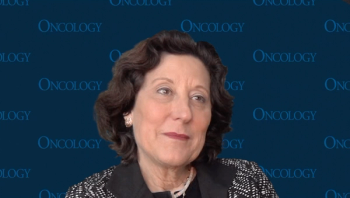
Updated results from the 1b/2 ELEVATE study elucidate synergizing effects observed with elacestrant plus targeted therapies in ER+/HER2– breast cancer.

Your AI-Trained Oncology Knowledge Connection!


Updated results from the 1b/2 ELEVATE study elucidate synergizing effects observed with elacestrant plus targeted therapies in ER+/HER2– breast cancer.

Panelists discuss how using dual immunotherapy regimens for melanoma in real-world practice involves balancing efficacy with safety, patient comorbidities, and treatment accessibility, while also addressing challenges such as immune-related adverse events and treatment sequencing.
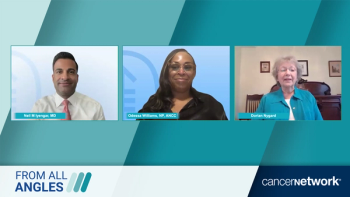
Panelists discuss key aspects of supportive care that aided a patient's journey, including the impact of her primary caregiver's support, the sources of strength drawn from personal, spiritual, or community connections, and the roles of integrative medicine and nutrition in her treatment experience.

Panelists discuss the supportive care considerations for patients being treated for metastatic HER2+ breast cancer, including the roles of nutrition, exercise, and other integrative approaches in enhancing patient well-being and treatment outcomes.

Panelists discuss how treating patients with melanoma and brain metastases requires a multidisciplinary approach, emphasizing the role of immunotherapy, targeted therapy, and local treatments, while considering factors like the extent of metastasis and patient-specific factors.

Patients with ESR1+, ER+/HER2– breast cancer resistant to chemotherapy may benefit from combination therapy with elacestrant.

Panelists discuss how this patient was admitted after the day 1 dose of talquetamab for observation for CRS and ICANS. Patients such as this are given a 0.01-mg/kg dose on the first day, a 0.06-mg/kg dose on day 3, and a 0.04-mg/kg dose on day 5 if there are no issues. The patient is then monitored for 48 hours and is discharged before getting the 0.08-mg/kg dose.

Panelists discuss the chimeric antigen receptor (CAR) T-cell collection, manufacturing, and infusion process, highlighting how it differs from previous treatments, and share the challenges faced during CAR T-cell therapy, including managing adverse effects.
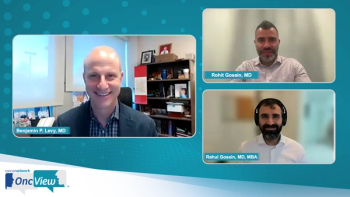
Panelists discuss how thoracic oncologists are adapting to a rapidly evolving treatment landscape for lung cancer, focusing on the integration of novel therapies and the importance of biomarker-driven approaches in patient care.

Panelists discuss how patient 1 is a 76-year-old female with unknown- stage R-ISS, oligosecretory IgG-K/KLC MM currently treated with talquetamab. One year following the talquetamab initiation, she is in VGPR/MRD- (likely CR or sCR as IFE positive is LLC and she has KLC). To spare toxicity physicians have decreased her dosing to monthly, starting with cycle 14 day 1.

Panelists discuss the rationale for considering chimeric antigen receptor (CAR) T-cell therapy in standard-risk multiple myeloma and how health care providers help patients understand and prepare for the decision to pursue CAR T-cell treatment.

Investigators are currently evaluating mosunetuzumab in relapsed disease or comparing it with rituximab in treatment-naïve follicular lymphoma.

Panelists discuss how a patient and their medical team collaborated to evaluate the differences between ide-cel and cilta-cel CAR T therapies to make an informed treatment decision.

Panelists discuss how clinical trial data from CARTITUDE-1, CARTITUDE-4, and KarMMa-3 demonstrate the efficacy of CAR T therapies cilta-cel and ide-cel in multiple myeloma, comparing their real-world outcomes and considering patient-specific factors for treatment selection.
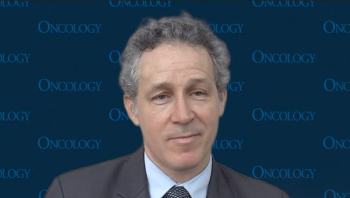
Compared with second-generation tyrosine kinase inhibitors, asciminib was better tolerated in patients with chronic myeloid leukemia.

The 2 main pafolacianine components, a folate analog and a dye, are commonly used in other medical applications.

Using bispecific antibodies before or after CAR T-cell therapy in multiple myeloma is an area of education for community oncologists.

Panelists discuss the adverse effects experienced by a patient undergoing treatment with capecitabine (Xeloda), trastuzumab (Herceptin), and tucatinib (Tukysa), along with the strategies employed to manage those adverse effects, while also addressing patient follow-up procedures, including the frequency of visits, typical labs and imaging ordered, concerning symptoms and lab results, and the outcomes of the patient's most recent follow-up appointment.

Panelists discuss how dual immunotherapy for melanoma, including combinations like nivolumab plus ipilimumab or nivolumab plus relatlimab, requires careful consideration of sequencing decisions based on factors such as tumor burden, patient health status, and potential toxicity profiles.

Panelists discuss how patients are prepared for treatment, the adverse effects associated with different agents and combination regimens that they educate patients about, the process of administering treatment for HER2+ breast cancer, and the overall approach to monitoring and managing adverse effects throughout the treatment journey.

Panelists discuss how the indirect treatment comparison of RELATIVITY-047 and CheckMate 067 suggests that nivolumab plus relatlimab may provide similar efficacy to nivolumab plus ipilimumab in advanced melanoma, with a potentially better safety profile.
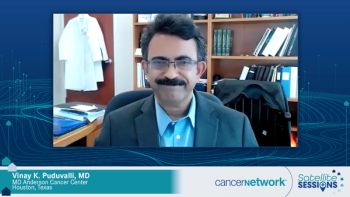
Panelists discuss how unmet needs in glioma treatment persist despite recent advances, highlighting key areas for future research and development to improve outcomes and quality of life for patients with gliomas.

Bulkiness of disease did not appear to impact PFS outcomes with ibrutinib plus venetoclax in the phase 2 CAPTIVATE study.

Panelists discuss how the patient’s journey with multiple myeloma begins with an initial diagnosis followed by first-line treatments and how this informs the decision to consider chimeric antigen receptor T-cell therapy as a subsequent option in their treatment path.

Panelists discuss the progress of the BRIDGET trial and its potential impact on HER2-positive breast cancer patients, focusing on the anticipated data and its implications for treatment strategies in this population.

Panelists discuss how ongoing trials may reshape the treatment landscape for HER2-altered NSCLC, particularly regarding the roles of ADCs and TKIs in managing both HER2-mutated and HER2-overexpressing NSCLC.

Panelists discuss a brief overview of recent data on combination systemic therapies for the treatment of advanced HER2+ breast cancer, including studies such as DESTINY-Breast03, DEBBRAH, HER2CLIMB-02, and EMILIA, and they analyze which patient populations may benefit most from each therapy option based on the available data.

An intravenous infusion administered prior to surgery enables treatment to occur in a normal time frame without the need for additional procedural time.
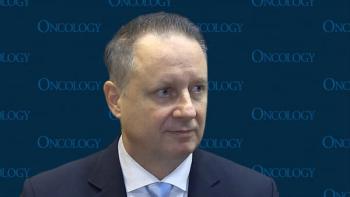
Optimal cancer survivorship care may entail collaboration between a treating oncologist and a cancer survivorship expert.

Panelists discuss how health care providers engage in vital conversations with patients about CAR T therapy, focusing on comprehensive education, emotional support, and clear communication about the treatment journey ahead.